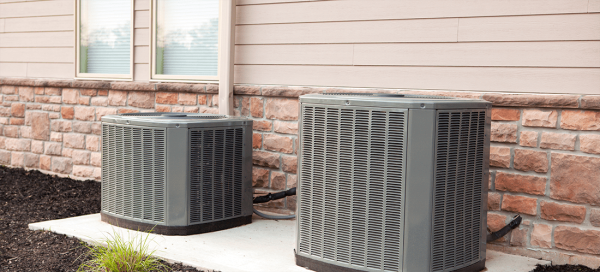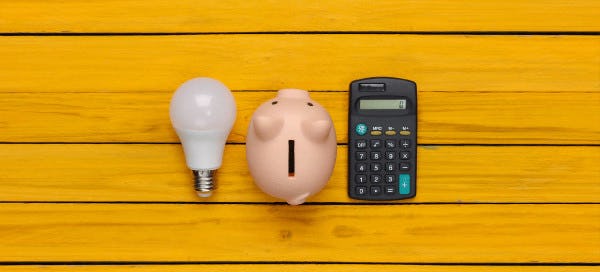If you're looking for ways to save energy and lower your electricity bill, conducting a DIY home energy audit can help.
A study conducted by the Lawrence Berkeley National Laboratory found that Americans spend around $2,060 per year on energy costs. One of the best ways to understand your home's energy usage is to perform a DIY home energy audit. That's why we've put together this quick and easy guide to help you along the way (you can thank us later). Check out the steps below to explore your home's energy performance and to learn about energy improvements you can make.
Step 1: Check windows and doors for drafts
Did you know that windows are one of the biggest energy wasters of all? If your home's windows are outdated or damaged, there's a good chance you'll have some air leaks. When this happens, the outdoor air finds its way into your home while the indoor air escapes to the outdoors.
What to do: On a windy day make a point to close all the windows and exterior doors of your home. After that's done, light a stick of incense and visit each window and door. Move the incense around the perimeter and keep an eye out for any sudden changes in the smoke. If you notice air coming in from the outside and disrupting the rise of smoke, you likely have air leakage.
Some other air leak culprits include:
Fireplace dampers
Mail slots
Doggie doors
Air conditioners (window-mounted)
Electrical outlets
How to fix it: To seal air leaks from windows, doors, and electrical outlets you should caulk and weatherproof them. If electricity outlets are letting in air, you can install foam gaskets behind the outlet to keep drafts at bay.
If you're not comfortable fixing the air leaks yourself, you can always hire outside help for the work.
Step 2: Inspect appliances and electronics
Did you know that many appliances and electronics use electricity when they are in stand-by mode or not in use? This is because these devices utilize phantom power. If your coffee machine has an indicator light or a digital clock, it's using phantom power. And it's not helping your electricity bills.
What to do: To truly investigate which devices in your home use the most energy, we recommend purchasing a kilowatt detector. This will measure how much power is being drawn from the outlet when the device is "off".
Some common energy vampires to check include:
Computer towers
Speakers
Game consoles
Printers
Laptop charger cables
Microwaves
How to fix it: For appliances and electronics that use phantom power, consider connecting them to the same power strip. That way you can turn everything off at once and cut power from the outlet with the simple flick of a switch.
Step 3: Evaluate insulation levels
If you're like most Texas homeowners, you probably aren't super proactive about ensuring your home is energy efficient. Heat loss from poor insulation can occur in many places, such as the floor, ceiling and walls of your home (this is especially true if you have an older home).
What to do: Inspect your home's attic for a vapor barrier under the insulation.
How to fix it: If there is no vapor barrier, you may want to consider painting the interior ceilings with it. This material reduces the rate at which water vapor can move through a material. If your home has a basement or crawlspace, make sure there is insulation under the living area's floor.
Step 4: Check heating and cooling equipment
Home heating and cooling systems contribute heavily to your energy bills. As the weather gets colder, you use more heat. When summer arrives, you crank up the air conditioner.
What to do: Review the previous year's electricity bills and identify any drastic fluctuations (oftentimes these will be in winter and summer months). If you see a huge spike in energy usage, your heating and cooling system may not be very efficient and should be repaired or replaced.
How to fix it: No matter what type of heating and cooling systems are in your home, it's important to have them inspected on an annual basis. If your system is more than 15 years old, consider upgrading to a new more energy efficient model (it will save you energy and money in the long run!).
Step 5: Inspect light bulbs
Did you know there are lightbulbs that you can control from your phone now? Yeah. We've come a long way since the Edison days. Your home's lighting is a big contributor to your energy bills, so it's worth investigating the light bulbs in your home to see if it's time to make some energy efficiency upgrades.
What to do: Check the light bulbs in all the ceiling lights and lamps in your home. Are you using inefficient, cheap light bulbs that have a funky glow and burn out after a month?
How to fix it: Consider replacing your old light bulbs with more energy efficient bulbs, like LEDs. You can also invest in lighting controls like sensors, dimmers and timers to reduce your energy consumption and save money.
Save energy with your energy provider
If saving energy and helping the planet is your bag, check out our Texas renewable energy plans. From solar energy plans to wind energy plans, we offer 100% affordable and renewable plans that you're sure to love. For wallet friendly and planet friendly electricity plans, sign up with Rhythm today!




